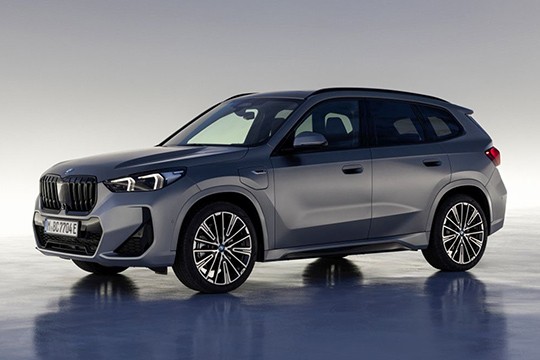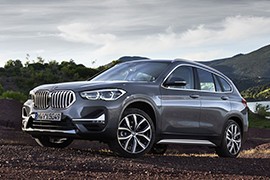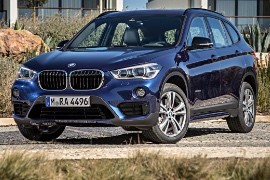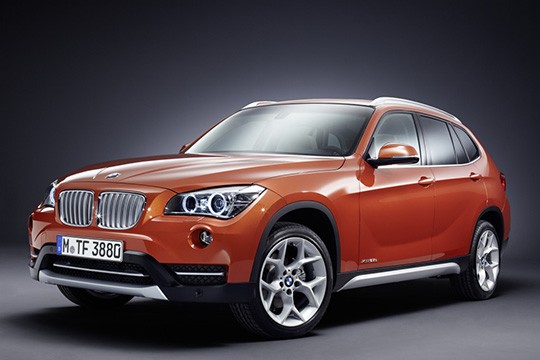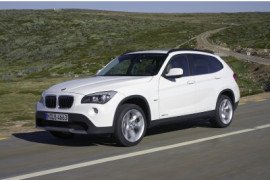BMW X1 Models/Series Timeline, Specifications & Photos
First production year: 2009
Engines: Gasoline, Diesel, Mild hybrid, Mild hybrid diesel, Hybrid
Body style: SUV (Sports Utility Vehicle)
BMW introduced the third generation of its smallest SAV, the X1, in 2022, and it was not only the smallest but also the most affordable crossover vehicle built by the German brand.
When BMW launched the first generation of the X1 in 2009, it was a daring move that proved successful. Despite its narrow interior, it was an excellent car for those who needed a small vehicle for urban driving. It was also suitable enough for long trips. Unfortunately, since it was based on a platform fitted with a longitudinal engine, it couldn't offer too much interior space. But that was changed starting with the second generation, and, in 2009, the third reiteration gained more traction on the market.
For the exterior, BMW installed a pair of swept-back headlights that resembled those mounted on the 3 Series, with an option for adaptive LED headlamps. The massive front grille was not that big anymore. It looked almost normal for the car's size. The X1's profile revealed an ascending beltline that ended with the already famous "Hofmeister Kink" imagined back in the early 70s. Luckily, the design team created the 2022 X1 to look more like an SUV than a regular station wagon.
Inside, the X1 revealed an elegant cabin with a curved display that showed the data needed by the driver fronting the steering wheel. At the same time, the infotainment unit placed atop the center stack gave the impression of a single, continuous panel. Moreover, thanks to the front-wheel-drive architecture and the transverse-mounted engine, the carmaker could offer a wider interior space.
The 2022 X1 covered all the bases with either front or rear-wheel drive, with gasoline or turbo-diesel engines under the hood. In addition, all versions benefited from the 48v mild-hybrid technology.
The BMW X1 is one of the most important models in the Bavarian carmaker's lineup. In 2018 it was the brand's best selling model worldwide and after four years on the market it was time for a facelift.The face-lifted X1 has a dominant front bumper with bigger air-intakes. The whole front end was redesigned with a bigger grille (the BMW kidneys) and new LED headlights were installed.
Inside the cabin, the X1 brings style and technology together. Three versions are offered on top of the base equipment: Sport Line, xLine and M Sport. The X1's focus is on comfort for all the seats. The rear bench can be split in a 60:40 scheme and the seat surface can slide independently by up to 13 cm (5.1 in).
For the engine compartment, BMW offers three and four cylinder engines, turbodiesel or gasoline, plus a PHEV. The base model has a 1.5-liter turbodiesel unit with three cylinders, which can be fitted with a 6-speed manual transmission or a 7-speed dual-clutch gearbox. The base model comes as FWD and it is badged as sDrive. The top spec version is the BMW X1 xDrive25i, which offers 231 hp from a 2.0-liter turbocharged gasoline engine. It can sprint from 0 to 100 kph (62 mph) in 6.5 seconds.
The most economical version is the xDrive25e Plug-in Hybrid. It uses a 1.5-liter gasoline turbocharged three-cylinder engine and an electric motor with 70kW. The combined total output is 224 hp.
In 2016 BMW introduced the second generation of its smallest SUV, the X1, and unlike its predecessor, it was not based on the same platform as the 3 Series.
The first generation of the X1 was welcomed by BMW's customers, although most of them complained about the cramped interior. So, the German automaker turned its attention to a new platform named UKL2, which was shared with MINI.
Due to this platform, the car no longer featured a longitudinally-mounted engine but a transversely-mounted one. This major change led to a new front-end design with a shorter nose and overhang. The cabin was pushed forward as well, thus helping the automaker create wider front and rear doors. Still, the front fascia shared the same design language as the rest of BMW's vehicles, with an enlarged kidney-grille up front and a pair of headlights resembling those installed on the X3.
Inside, there was a roomier interior than on the X1's first generation. At the front, the automaker installed bolstered seats separated by a tall center console that housed the gear stick or the gear selector for the automatic-transmissions versions. On the dashboard, fronting the driver, BMW installed two large dials inside the instrument cluster, complemented by temperature and fuel level gauges. In addition, a small LCD placed underneath them showed various information from the onboard computer. Atop the center stack, the automaker installed the infotainment system screen, which was controlled by a rotary dial and a few buttons around it mounted on the center console. Thanks to the new architecture, the automaker could provide better legroom for the rear passengers and generous trunk space.
BMW made the second generation of the X1 with either front or all-wheel drive systems, with either a six-speed manual or an eight-speed automatic provided by Aisin. For specific versions, the automaker offered a six-speed automatic or a seven-speed dual-clutch gearbox.
BMW refreshed the X1 lineup for the 2014 model year, enhancing not just the crossover's look but also the drivetrain.
Based on the same platform as the E90 3 Series, the X1 was introduced as an alternative for premium small-sized crossovers in 2009. In 2012, after the vehicle was sold in over 275,000 units, the carmaker introduced the facelifted version at the New York International Auto Show. As a result, the sales jumped above the 150,000 units mark for 2013 and 2014. The E84 was a hit on the market.
Along with the new version, the X1 received a revised front fascia that sported new headlights and grille. In addition, the lower bumper was restyled and sported a larger painted area than on its predecessor. Also, the headlights were redesigned and featured LED daytime running lights, included in the Xenon light package. On its profile, the small-sized crossover boasted turn signals incorporated in the door mirrors' caps.
Inside, the most significant change was on the dashboard and on the center console for vehicles fitted with an automatic transmission. For the former, the automaker installed new knobs and switches. At the same time, the new gear selector didn't follow the PRND pattern anymore but a sequential one instead. Furthermore, there was no lever but a small joystick-like shifter. But like in the 2009 X1, there was limited room in the back due to the tall transmission tunnel that crossed the car from front to back.
Under the hood, the automaker installed a new inline-four powerplant that was offered with or without a turbocharger.
BMW X1 (E84) 16d sDrive 6MT RWD (116 HP)
BMW X1 (E84) 16d sDrive 8AT RWD (116 HP)
BMW X1 (E84) 18d sDrive 6MT RWD (143 HP)
BMW X1 (E84) 18d sDrive 8AT RWD (143 HP)
BMW X1 (E84) 18d xDrive 6MT AWD (143 HP)
BMW X1 (E84) 18d xDrive 8AT AWD (143 HP)
BMW X1 (E84) 20d sDrive 6MT RWD (184 HP)
BMW X1 (E84) 20d sDrive 8AT RWD (184 HP)
BMW X1 (E84) 20d sDrive EffcientDynamics Edition 6MT RWD (163 HP)
BMW X1 (E84) 20d xDrive 6MT AWD (184 HP)
BMW X1 (E84) 20d xDrive 8AT AWD (184 HP)
The newest and the smallest member of the lineup, the X1 was the missing piece in the BMW’s X range.
The exterior design of the X1 got us thinking about its bigger brother, the X3. However, the taillights and the headlights were given the aspect of the 7-Series released in 2008.
The X1 was based on the 3 Series platform, thus provided plenty of cabin space and great cargo room.
The interior was nicely finished, with high quality materials and lots of technology included. Headroom and legroom were good for both the front and the rear passengers.
The luggage compartment could be increased from 420 L to 1,350 L with the rear seats folded.
Safety wise, the X1 was equipped with Dynamic Stability Control, an optional Performance Control and frontal and side airbags. Optionally, buyers could add xenon headlights, adaptive headlights and a high-beam assistant.
The X1 came with the latest generation of the BMW iDrive system combined with the optional Business and Professional navigation.
The X1 had a great handling with a precise steering, and, even if the steering was a bit heavy at lower speeds, it offered great feedback at higher speeds.
The X1’s starting price was at $43,000, however, the optional features were not the cheapest to add.
BMW X1 (E84) sDrive16d 6MT RWD (116 HP)
BMW X1 (E84) sDrive18d 6MT RWD (143 HP)
BMW X1 (E84) sDrive20d 6MT RWD (177 HP)
BMW X1 (E84) sDrive20d Efficient Dynamics Edition 6MT RWD (163 HP)
BMW X1 (E84) xDrive 25d 8AT AWD (214 HP)
BMW X1 (E84) xDrive18d 6MT AWD (143 HP)
